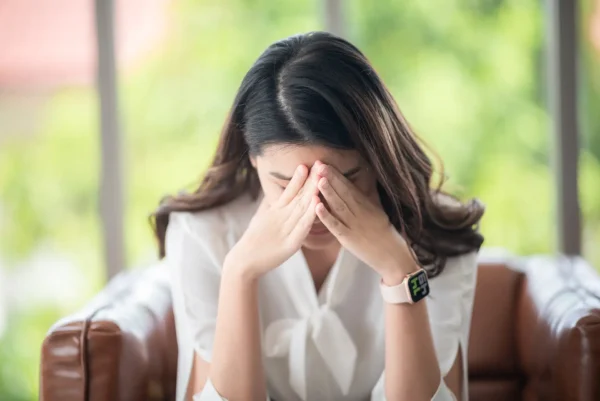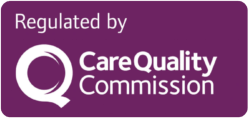
What is mastalgia?
Mastalgia encompasses various sensations, including:
- Heaviness
- Tightness
- Discomfort
- Burning
The pain may be felt in one or both breasts, and its intensity can range from mild to severe.
Types and Causes of Breast Pain
Understanding the type and cause of mastalgia is crucial for effective management.
Cyclical Mastalgia
This type of breast pain is linked to hormonal fluctuations during the menstrual cycle. It usually begins a couple of weeks before a period and improves once menstruation starts. Cyclical mastalgia may also resolve naturally after significant hormonal changes, such as pregnancy or menopause, although it can recur – many people report this pain returns within 1 to 2 years.
Cyclical mastalgia isn’t fully understood, but it’s thought to be related to hormonal changes that affect breast tissue. Other things like caffeine, low iodine levels, dietary fat, and smoking might play a role, but it’s not confirmed if they directly cause it.
Non-Cyclical Mastalgia
Non-cyclical breast pain is not tied to the menstrual cycle and may have several potential causes, including:
- Medications: Certain medications, including hormonal contraceptives, antihistamines, and antidepressants, may list breast pain as a possible side effect.
- Trauma or injury: Previous breast surgery or injury can lead to persistent discomfort. This could be caused by traumatic fat necrosis, when an injury causes fat to break down, leaving a lump or scar which can also cause pain.
- Inflammation or infection: Conditions like mastitis or a breast abscess can result in acute breast pain.
- Duct ectasia: A condition where milk ducts widen, leading to inflammation and pain. It’s more common in postmenopausal women and smokers, but the cause is not well-known.
- Breast cysts: Fluid-filled lumps common in all ages, before, during, and after menopause. If cysts grow quickly they can cause sudden, sharp pain. The size also changes throughout the menstrual cycle, which can also cause pain.
- Fibroadenoma: Non-cancerous breast lumps. Fibroadenoma is more common in younger women, typically under thirty, and particularly in those of Afro-Caribbean descent.
- Phyllodes tumours: Fast-growing breast lumps which grow quickly and cause pain from increased pressure in the breast. Most are benign, but some tumours can be cancerous.
- Breast cancer: It’s important for all people experiencing breast pain to have a thorough assessment by their healthcare provider to rule out breast cancer as a cause of persistent pain.
While pain alone is not typically a sign of breast cancer, it’s essential to consult a healthcare professional for a thorough assessment and diagnosis. Breast cancer is the most common cancer diagnosed in women: accounting for 1 in 10 new cancers diagnosed.

Treatment Options for Breast Pain
Treating breast pain depends on its underlying cause. Your healthcare provider may conduct an examination or use imaging tests like ultrasound or mammograms to determine the best approach.
Lifestyle Adjustments
Simple changes can help alleviate mild symptoms, for example, wearing a well-fitted bra during the day and supportive options during exercise or at night. Dietary modifications can also be tested, such as reducing caffeine intake, though evidence supporting the benefits of this is limited.
Pain Relief
Over-the-counter painkillers like paracetamol or ibuprofen may help manage symptoms. Creams or gels containing anti-inflammatory medications can also be effective and are recommended as first-line treatments.
Specialist Treatments
If standard treatments are insufficient, hormonal therapies like danazol or tamoxifen may be considered under the guidance of a specialist breast clinic.
Supplements
Although some individuals report benefits from supplements such as evening primrose oil, vitamin B6, flaxseed, or vitamin E, these are not widely recommended due to limited scientific evidence.
Medicinal Cannabis for Breast Pain
Living with chronic breast pain can significantly affect your quality of life, particularly when standard treatments fail to provide relief. Medical cannabis may be an option for those with persistent pain that has not responded to conventional therapies. Research suggests that the cannabinoids in medical cannabis interact with the body’s own endocannabinoid system and can affect pain and inflammation levels.
If you’re considering medical cannabis as part of your treatment plan, check your eligibility for a consultation today with our free online form.

